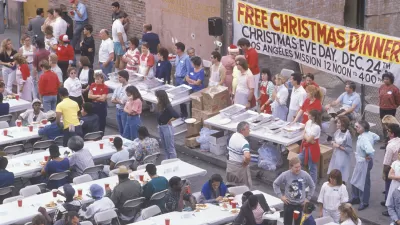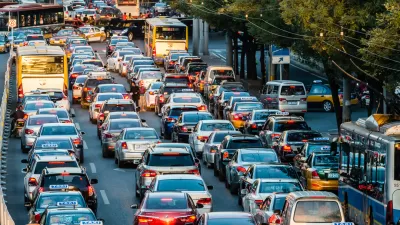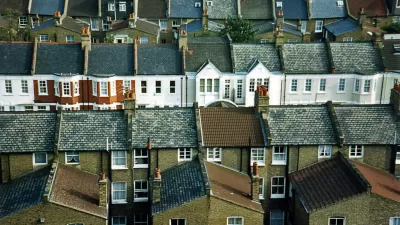A new study shows how pollution and poverty can create a persistent cycle in poor neighborhoods.

Political expedience often pushes undesirable, but necessary, land uses out of rich neighborhoods. These coal stacks, prisons, and highway overpasses are what The Smart Growth Manual calls LULUs, or what Joe Cortright calls “disamenities” in a piece for City Commentary. "Poor neighborhoods tend to bear a disproportionate share of the exposure to environmental disamenities of all kinds," Cortright writes. Worse still, these disamenities tend to create a feedback loop. "If a neighborhood is highly polluted or crime-ridden, people with the economic wherewithal to move elsewhere typically will. When they abandon dirty or dangerous places, the rents fall, and by definition, the residents of these neighborhoods disproportionately become those who lack the resources to afford a better alternative: the poor," Cortright explains.
Sadly, all this is not new news to city watchers. What gives new perspective is a historical study from St. Andrew's University. "The study shows that variations in pollution levels are significant factors in explaining the distribution of poverty within cities in the 19th century," Cortright reports. One interesting insight from the study reveals why the East End was so often the poorer side of industrial cities. The idea investigated here is that in cities powered by coal, if the prevailing winds blew from West to East, that meant that pollution would be blown to the east side of town, causing issues that long outlasted the industrial revolution.
FULL STORY: Pollution and poor neighborhoods: A blast from the past

Alabama: Trump Terminates Settlements for Black Communities Harmed By Raw Sewage
Trump deemed the landmark civil rights agreement “illegal DEI and environmental justice policy.”

Study: Maui’s Plan to Convert Vacation Rentals to Long-Term Housing Could Cause Nearly $1 Billion Economic Loss
The plan would reduce visitor accommodation by 25% resulting in 1,900 jobs lost.

Planetizen Federal Action Tracker
A weekly monitor of how Trump’s orders and actions are impacting planners and planning in America.

Wind Energy on the Rise Despite Federal Policy Reversal
The Trump administration is revoking federal support for renewable energy, but demand for new projects continues unabated.

Passengers Flock to Caltrain After Electrification
The new electric trains are running faster and more reliably, leading to strong ridership growth on the Bay Area rail system.

Texas Churches Rally Behind ‘Yes in God’s Back Yard’ Legislation
Religious leaders want the state to reduce zoning regulations to streamline leasing church-owned land to housing developers.
Urban Design for Planners 1: Software Tools
This six-course series explores essential urban design concepts using open source software and equips planners with the tools they need to participate fully in the urban design process.
Planning for Universal Design
Learn the tools for implementing Universal Design in planning regulations.
Caltrans
Smith Gee Studio
Institute for Housing and Urban Development Studies (IHS)
City of Grandview
Harvard GSD Executive Education
Toledo-Lucas County Plan Commissions
Salt Lake City
NYU Wagner Graduate School of Public Service





























